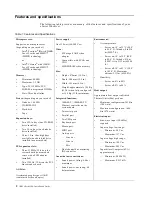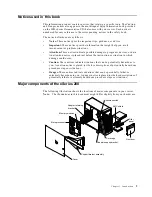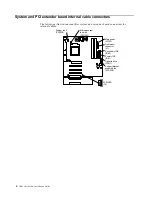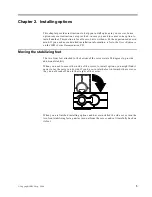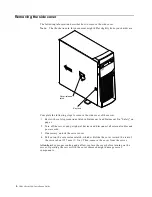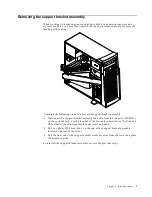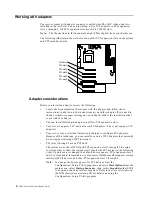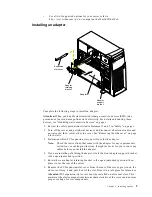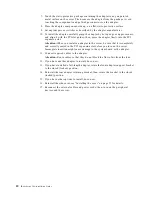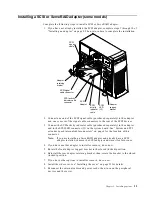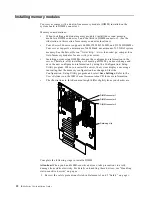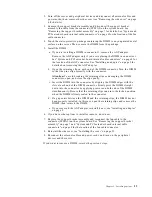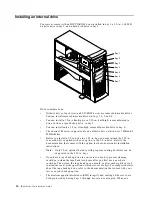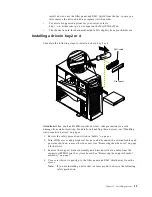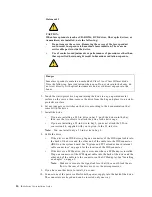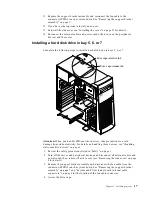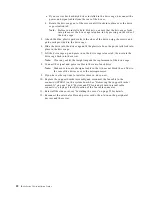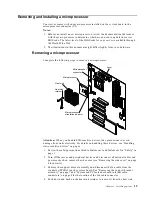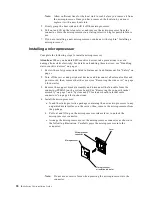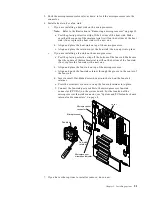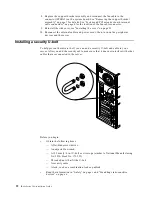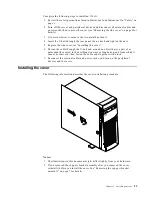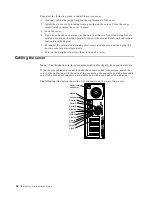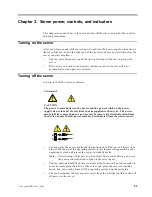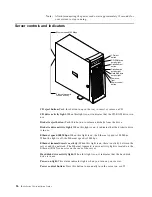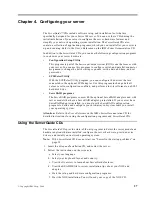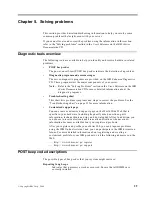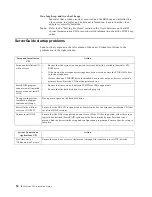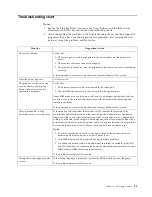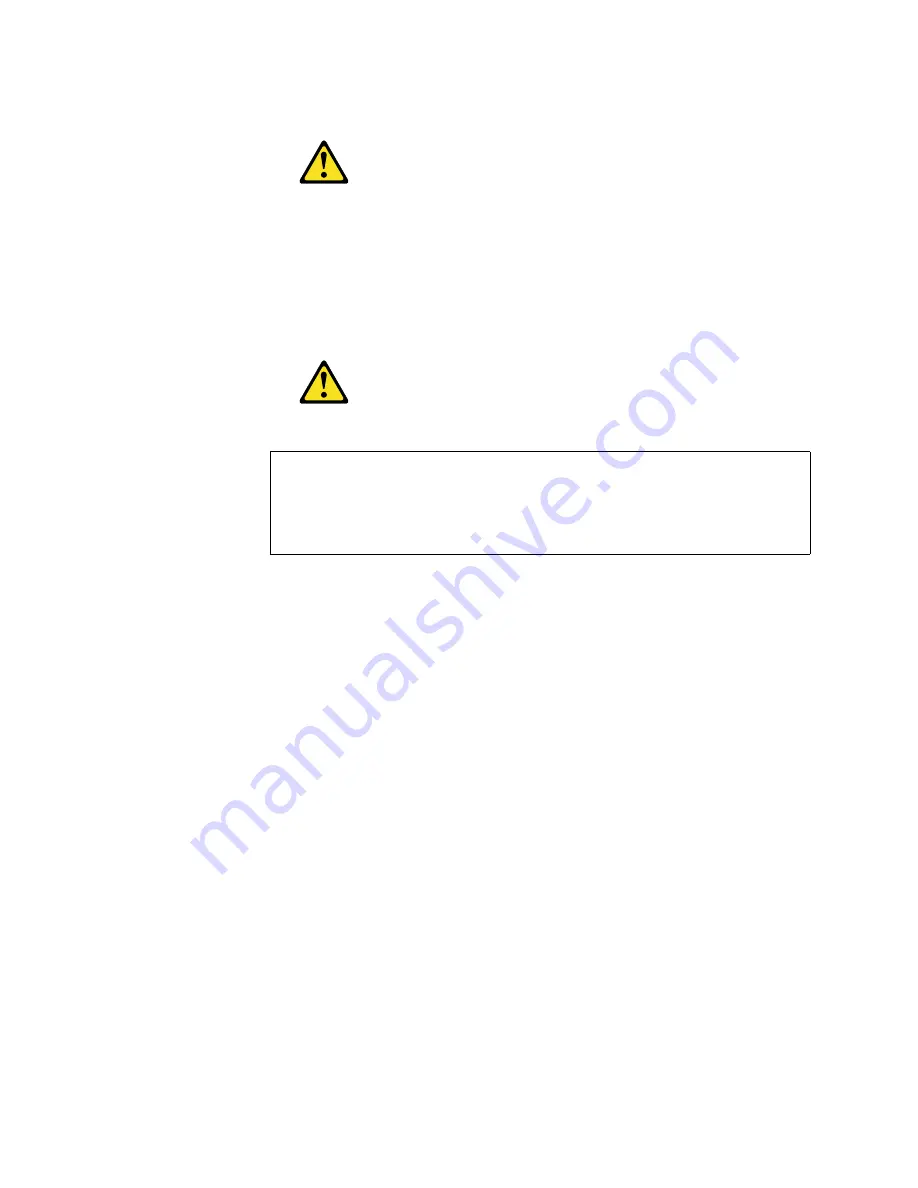
16
IBM xSeries 200: Installation Guide
5. Touch the static-protective bag containing the drive to any unpainted metal
surface on the server; then, remove the drive from the bag and place it on a static-
protective surface.
6. Set any jumpers or switches on the drive according to the documentation that
comes with the drive.
7. Install the drive.
•
If you are installing a 5.25-in drive in bay 2, push the drive into the bay;
then, use the two screws to attach the drive to the drive cage.
•
If you are installing a 3.5-in drive in bay 2, you must attach the 5.25-in
conversion kit, supplied with your option, to the 3.5-in drive.
Note:
You can install only a 3.5-in device in bay 4.
8. Cable the drive.
•
If the drive is an IDE device, plug one connector of the IDE signal cable into
the back of the drive and the other end of the cable into the IDE connector
(IDE1) on the system board. See “System and PCI extender board internal
cable connectors” on page 4 for the location of the IDE connector.
•
If the drive is a SCSI device, your server must have a SCSI adapter installed.
Plug one connector of the SCSI signal cable into the back of the drive and the
other end of the cable into the connector on the SCSI adapter. See “Installing
an adapter” on page 9.
Note:
Make sure to route the signal cable so that it does not block the air
flow to the rear of the drives or over the microprocessor.
9. If you have another drive to install, do so now.
10. Connect one of the power cables from the power supply into the back of the drive.
The connectors are keyed and can be inserted only one way.
Statement 3
CAUTION:
When laser products (such as CD-ROMs, DVD drives, fiber optic devices, or
transmitters) are installed, note the following:
•
Do not remove the covers. Removing the covers of the laser product
could result in exposure to hazardous laser radiation. There are no
serviceable parts inside the device.
•
Use of controls or adjustments or performance of procedures other than
those specified herein might result in hazardous radiation exposure.
Danger
Some laser products contain an embedded Class 3A or Class 3B laser diode.
Note the following. Laser radiation when open. Do not stare into the beam, do
not view directly with optical instruments, and avoid direct exposure to the
beam.

